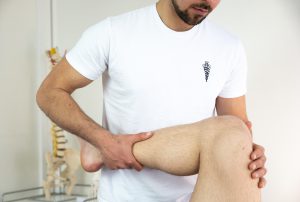
A physically very active patient, aged 48, who regularly runs, skis, and mountain climbs, experienced issues with his right knee, the cause of which was a damaged meniscus.
An arthroscopic surgery was performed, during which the damaged part of the meniscus was removed, and softening of a portion of the knee cartilage was found.
He is now recovering well and asks what he should do to return to his intense physical activity as soon as possible.
In this case, the surgeon performed symptomatic treatment. That is to say, they removed the part of the meniscus that was causing issues. The role of the meniscus is predominantly to absorb stress during daily and physical activities. Partial or complete removal reduces the overall shock absorption activity of the knee and makes it more sensitive to physical stress. Finding additional damage (softening) of the cartilage increases this sensitivity. Simplified, after the knee surgery, it is not “as good as new.” Initially, it will function with fewer issues than before the procedure, but its mechanics have changed.
The goal of postoperative treatment for such a patient is certainly to establish normal biomechanics through appropriate exercise aimed at increasing absolute and repetitive muscle strength and proprioception, as well as circulatory training and stimulation of cartilage metabolism. This process, depending on individual differences, can take from one to several months.
Additionally, an important part of preventing new injuries or further progression of cartilage damage is educating the patient about the load the knee can withstand after physical recovery, as well as which activities are high-risk and which are low-risk for the current condition of the joint. This does not necessarily mean giving up the previous lifestyle but rather controlling peak loads, especially during periods of local and general fatigue. This process is similar to learning to drive a car on slippery surfaces. It is still possible to drive it fast and for a long time, but it is recommended to enter curves more cautiously and slowly, and additional skills are acquired in the process.
